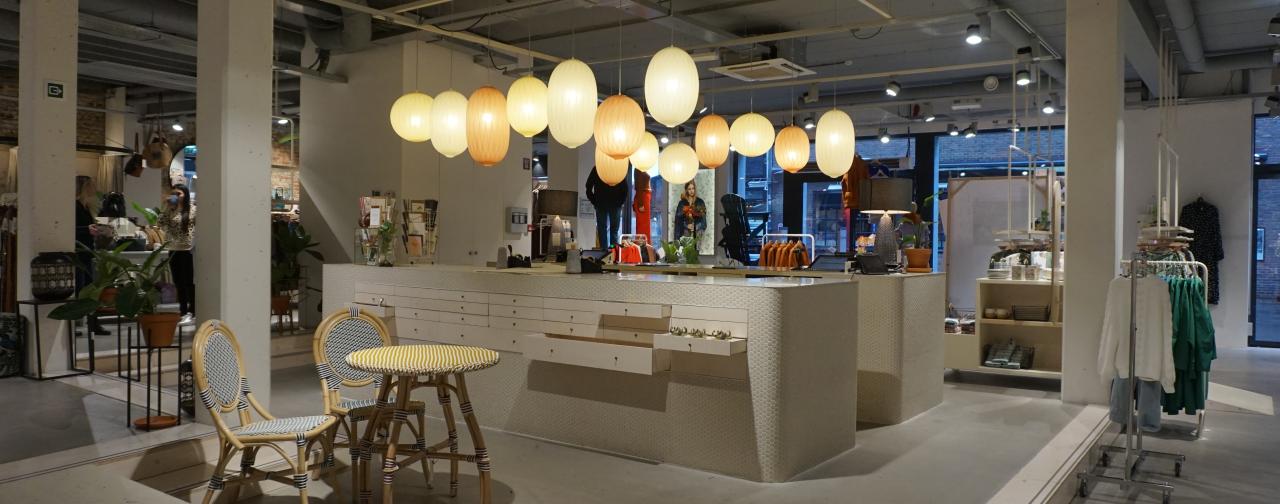[The Retail Design Lab has written this case study based on an extensive analysis of (and in consultation with) the retailer in question using our tools and scientific insights. This case study is intended to be an instructive 'best case'].
With or without a list, you always come out with more than you initially planned at the Ikea. Why do they succeed so well in seducing us? Or in other words, why can't we control ourselves when we are in the Ikea? Is it us or the Ikea?
Of course, we are responsible for the choices we make and the temptation we respond to. But anyway, Ikea tries very hard to make us happy, to give us a nice shopping experience and of course to encourage us to buy. Let's start with the first thing, to make us happy.
Of course you go to Ikea with a certain goal and you have already made the choice to buy something or to get inspiration, that is of course to Ikea's advantage, it is a destination store. Then we end up among all those beautiful design products at a price that is accessible to almost everyone, and that makes us happy. Design for everyone, the way Ikea profiles itself, makes us feel hip, in line with trends and at an affordable price.
Delicious Swedish food at a ridiculously low price also makes us happy. That moment even gives us the necessary relaxation and reward after the first part of our shopping trip (the showroom). Also all those beautiful reconstructed rooms that are super cozy, make us happy and makes us long for a possession of that coziness. When that longing is aroused, it is only a matter of time before we want to fulfil that longing and buy products to bring that cosiness into our home. What else makes us happy? Instant gratification. What you buy you take with you immediately, if it is a bed, closet or sofa. No six weeks delivery time. Now, immediately, that makes us happy.
The second aspect in which Ikea excels is about offering a fun shopping experience. We have to see that 'fun' within the context of the furniture sector. Fun shopping for clothes is of course far removed from the 'fun' feeling we get at the Ikea. But where else you can lie undisturbed and unabashed on beds, test 10 seats, you can touch everything (really everything!), you get to see the price very transparent, you can compare fabrics yourself (without annoying salesman passing by you), etc. The freedom that the Ikea offers us makes the experience to a certain extent 'fun'.
In addition, we constantly see fun stuff, inspiring rooms and even solutions for storage under stairs, beds, (too) small rooms etc. No expensive made-to-measure cupboards, but simple solutions that are also very creative. Don't forget that if you are a parent of young children, you can shop undisturbed for one hour without that little violence. Where else can you do that? Where can you assemble your kitchen so easily and on the spot, see the price immediately, get the choice to save money and install it yourself, or go for a safer way and have it installed?
What they excel at is giving you the feeling that you don't mind if you don't buy an item from them? No stress, no pressure. For those of you who decide to install it yourself after purchase, Ikea has come up with a lot of 'helpers' to help you. Tools such as a batten with pre-drilled holes to make it easy to screw the handles you have chosen onto your kitchen doors. No need for a spirit level or ruler anymore.
Which furniture shop succeeds in creating a world for children that suits them perfectly? The whole children's act is a playground for the children, but at the same time clear for the parents. Ikea knows very well that these little people are the consumers of tomorrow. So they spoil them well.
Incitement to buy
The third aspect Ikea is good at is how Ikea encourages us to buy. One of the ways they do this is by using portfolio openers. These are small, easy to carry products that respond strongly to price and the feeling of 'grab your chance'. They are often scented candles, small teddy bears, lamps, etc. that you already encounter in the very beginning of the showroom. When you, as a customer, meet your desire (which is aroused by the atmospheric rooms) and load these small cheap products into your yellow bag (which you also encounter very often and certainly near such a wallet opener) we left.
By taking this first product with us we know that we have to queue at the cash register and that we have to pay (open our wallet) so unconsciously it becomes much easier to load even more, pay and queue anyway. The wallet is open, as we say.
Communication on the shop floor
Ikea is also stoneware in communication on the shop floor. They succeed in communicating very clearly. From price to product info. But they also help you choose, for example, a pillow or a duvet by working with symbols that indicate, for example, the hardness, the degree of warmth that the blanket provides, etc. This makes it very easy for you as a customer to choose. Despite Ikea's wide range of products, we still experience relatively little stress in choosing at Ikea, partly due to the clear communication.
When things get a bit more complicated, Ikea has come up with a new strategy. Where you used to receive instructions consisting of 10 steps to choose the ideal mattress, now you can take the mattress of your choice with you and test it for 90 days. If you don't like it, you can simply bring it back. Isn't that an incentive to buy? They make it so easily accessible that it is very easy to persuade us to buy a mattress when we need one, of course. No doubt, no hesitation, you can bring it back anyway. And with a new mattress, of course, we need new sheets, et voila, we have left again.
So when you look at what retail principles and retail design principles a retailer can use to seduce his customer and to offer an optimal shopping experience, Ikea uses them all 100%, and this in a very intelligent way. Ikea tries to touch us in different ways, they do this so well that you have to be almost numb to resist. And the good thing for Ikea, but less for us, is that even if you know how they play you, you don't become less susceptible to it.




